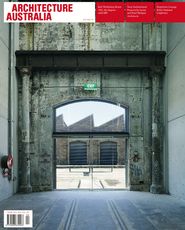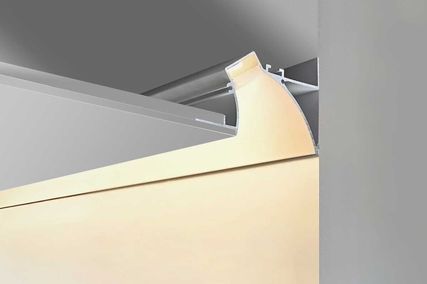Shifting procurement methods and developing technologies are changing architectural service and relationships within the construction industry. Tim Hurburgh from H2o architects and Kevin Driver from Turner + Associates Architects consider the implications
RECOVERING FROM THE OPERA HOUSE
A number of Australia’s best known constructed landmarks, most resulting from open competitions, have been public relations disasters for Australian architectural practice. The much-publicized time, budget and functional problems of many of these projects have created doubts in the public mind as to the reputation of architects as reliable managers of time and money, and their willingness to carry the client message.
The prolonged design and construction period of the Opera House, for example, also heralded a paradigm shift in the construction procurement process. New and complex issues began to impinge on timing and complexity of funding, briefing, designing and constructing a building. New technologies, an increasingly litigious town planning environment and a commercially competitive community created a multilayered industry with an increased number of stakeholders. Critically, an educated and egalitarian user had emerged, demanding greater input.
Scope Reduced and Fees Squeezed
The resultant vacuum created the opportunity for more sophisticated client support – interfacing between the “client”, responsible for brief and budget, and the “architect”, with responsibility for design and contract management. A unique new role had developed for an agent to support the client team. The “project manager” was to fulfil this role.
The intervention of the project manager between client and design team, along with parallel commercial opportunities for this new profession, was to have the most profound impact on architectural practice, scope of work and fee structure for more than a century. As project managers sought to increase their influence and expand their role, architects were being squeezed on fees commensurate with a reduced role, as traditional architectural functions in management, programming, coordination and cost control were “hived off”.
Competition among architects operating in a deregulated environment was intense. Less was being demanded but for an aggressively tendered or negotiated fee. Eventually, the reality that architects continued to perform many of these traditional roles led to a reassessment. Scope was increasing but fees were decreasing. Greater risk was also being borne.
Today, services offered by architects may be characterized as bifurcated between “full service”, where generally – with the possible exception of residential projects, which have a unique and often problematic client/ architect dynamic – a reliable product is offered across the board, and a range of discounted “partial services”.
This is echoed in the design outcomes. In Melbourne, at least, these have led on the one hand to the city’s reputation as a “design city”, while on the other to the production of modest commercial projects/urban spaces that to the casual eye might seem to undermine this accolade.
Another trend to emerge across a diverse spread of projects is the idea that if “the documents are complete then there is no need to engage architects for supervision”. This leads to a further erosion of the full service model, with a consequent further erosion of fees and lack of responsibility for the constructed outcome.
This situation is further exacerbated by the competitive nature of many contemporary procurement models, such as PPPs, which require architects to produce extensive design work and detail for a reduced fee with only a percentage chance that they will be in a successful bid.
Design-led Focus on Change
How do we face this challenge? Do we consider becoming developers or offer our own design/construct model? Do we extend our design skills to other products? What do we require of the RAIA?
One answer lies in focusing on our primary skills to get back on the front foot. We need to remove artificial distinctions between designers and other architectural skills. All architects are, uniquely, trained to synthesize problems, to take risks and to think laterally – by definition we are the industry’s entrepreneurs. It is the reason we are involved at the front end (and also the reason for the increasing use by contemporary media of the term “architect”, implying the person who has the ideas and/or constructs and manages a wide-ranging proposition). We need to maximize and exploit this opportunity much more aggressively.
This can take many forms. We can:
• Resist our natural enthusiasm for ideas, which leads to the giving of free advice. Other professions do nothing without a fee. We must follow these precedents.
• Adopt a more professional stance on where we offer our advice. It is much more difficult to charge properly for advice given around the kitchen table, “à la cafe” or in someone else’s boardroom.
• Maximize charge-outs for front-end design advice, briefing, master planning, concept designs, sketches and 3D imaging, recognizing as above that these are our primary skills.
• Avoid unpaid or minimally paid work on PPP-type competitions, where we make perhaps the greatest contribution for the least reward. (The RAIA and others are currently investigating less risk-adverse models.)
• Canvass industry, with aggressive RAIA support, to ensure that risk is not being unfairly loaded. (See Carey Lyon, “Is How Harder Than Why?”, Architecture Australia, vol 96 no 2, March/April 2007.)
• Learn builder-style negotiation of subcontract pricing for projects where architects provide the full team.
• Recognize and adopt “loose fit” design strategies for design/ documentation-only commissions.
• Extend skills to other design opportunities and products – graphics or real estate development. Establish in-house subconsultancies in parallel design disciplines such as landscape, urban design, planning, engineering, ESD and occupational health and safety.
• Seek full and proper accreditation of published work/drawings, particularly in the commercial media. Seek RAIA support to overcome the presently common publication of architects’ work and visual representations without accreditation.
As someone once said, “It’s time to stand up and be counted.”
Tim Hurburgh is a director of H2o architects.
DEVELOPING THE ROLE OF INCLUSION
The latter decades of the twentieth century saw a burgeoning mistrust in architects. Not only did the public’s faith become eroded, but the foundation was also laid for the remainder of the industry to pillage many of the traditional roles of the architect. This was also partly due to a lack of evolution in the profession. We were left behind by a new breed of project managers who were better able to service projects that were increasing in both their pace and complexity.
To compensate for this, there has been a subtle shifting in the role of the architect on large developer-led projects over recent years due to two main factors. One is an increase in the breadth and depth of the architectural services on offer, and the other is time invested in relationships with developers, project managers and contractors over extended periods, not simply for a single project.
Role Reborn
The role of the architect is expanding somewhat, but into different areas from those traditional under an administered contract. Architects must have a keen political understanding and an innate ability to respond to the commercial realities of a project. We must be able to guide and direct the wider consultant team, to navigate the often lengthy processes required in gaining approvals, to demonstrate an understanding of the process of building and to communicate in an intelligent manner with those whose job it is to build the buildings.
Rarely do clients come to us with a site and a brief and ask for a building.
They tend to look for a more informed strategic input. We are now more approachable. On the edge of the twenty-first century, architectural practices must be poised not only to keep pace with the changes in process and technology, but to lead them.
Educational institutions need to catch up with this position. The current professional practice syllabus relies heavily on understanding traditional contract procedures. We need to encompass other processes that are becoming more typical. Otherwise, this shift in the role of the architect will become stunted and incomplete, as those who leave universities will be ill-equipped to enter a changing workplace.
Extending Relationships
It is now rare to find a “contractor” who employs site operatives directly. They have tended to become construction managers, subletting the individual contract packages. This is where maintaining a key role can become trickier, as the architect is often novated to the contractor and there is no requirement for the contractor to actually follow anything that the architect designs with any degree of accuracy. A good response to this is to develop longstanding relationships with contractors. This may take much effort and no small amount of persuasion, but such endeavours can produce not only better buildings, but a more cohesive, less stressful process. Understanding and respect lead to greater participation in the discourse on site, enabling a higher degree of control. This puts the architect in the position of advising where value management exercises might be undertaken, as opposed to the carte blanche removal of aspects of the design without an overall understanding of the implications, which can occur when decisions are made without the architect’s involvement.
We often find, with new contractors, that for the first project we are expected to accept lower fees that reflect the low time and input expected of us. As each subsequent project leads to another, the value of our time and input is better understood and the fee and degree of engagement increase, along with mutual respect. Eventually, an outsider listening to the discussions between architect and contractor would be forgiven for thinking that these projects were set up on a traditional basis. This removes the more typical adversarial approach between individuals and fosters a shared viewpoint. The fact that we initially seem to battle with contractors over the importance of the architect’s role would suggest that others must be sitting back and allowing this reduction in their standing and level of input at the construction stage.
Forging closer relationships with project managers is also important for engendering an overall team approach from project inception onwards. It is clear in this climate that, where possible, a long-term relationship within the wider team can only improve understanding and expectations and ultimately lead to the delivery of a building of quality, without forfeiting concerns over programme or cost.
Architectural Project Team
The forming of relationships goes hand in hand with the desire to see continuity of the architectural team within the office from the initial stages through to completion. It’s better not to break teams into specialized roles relating to project phases, and instead to apply a more European model of team structure that is based on continuity rather than specialization.
This allows deeper long-term relationships and ensures that project-based knowledge and learning is not lost. There are also advantages to a practice size and structure that allow for meaningful, ongoing input at director level throughout each project – the project does not get handed down the line after the initial engagement.
A Process of Inclusion
By offering a wider knowledge base, by treating the relationships with clients, developers, consultants, project managers and construction managers with a high degree of respect, and by investing time in increasing continuity, architects can develop a mutual trust and understanding that brings higher levels of quality and general overall satisfaction to each project.
The strength of an architect’s vision at the start of a project can only navigate the processes that lead to the project’s completion without compromise if the architect is allowed a central and continuous role throughout. We have seen that this is possible on developer-led design and construct projects through an emphasis on long-term relationships and through providing a wide platform of knowledge and expertise. While undoubtedly many others are making the same effort, it is clear from the reactions of our clients, contractors and project managers that this is by no means true for all architects. Ultimately, the process must be one of inclusion.
Kevin Driver is an associate director of Turner + Associates Architects.















